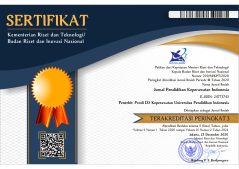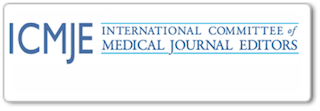Association Between Maternal Use of Smart Bracelets and Stunting Incidence in Toddlers: A Case-Control Study in Sumedang, Indonesia
Abstract
Introduction: Stunting remains a significant public health issue in Indonesia, particularly in rural areas such as Sumedang, West Java. Maternal health during pregnancy is a critical determinant of fetal growth, yet limited attention has been given to digital health innovations as part of stunting prevention strategies. Objective: This study aimed to examine the association between maternal use of smart bracelets during pregnancy and the incidence of stunting in toddlers, while also assessing the influence of maternal education, antenatal care (ANC) attendance, and dietary intake. Methods: A case-control study was conducted in Margamukti Village, Sumedang Regency, involving 100 mother-child pairs (50 cases and 50 controls). Data were collected through structured interviews and cross-referenced with maternal and child health records. Statistical analyses included chi-square tests, odds ratio (OR) calculations, and multivariate logistic regression to identify factors independently associated with stunting. Results: Mothers in the control group (non-stunted children) reported higher use of smart bracelets during pregnancy (56%) compared to the case group (24%). Smart bracelet use was significantly associated with reduced odds of stunting (adjusted OR = 0.28, 95% CI: 0.12–0.64, p = 0.003). Other protective factors included higher maternal education (adjusted OR = 0.46, 95% CI: 0.21–0.98, p = 0.045), attending ≥4 ANC visits (adjusted OR = 0.35, 95% CI: 0.16–0.78, p = 0.009), and adequate dietary intake during pregnancy (adjusted OR = 0.31, 95% CI: 0.14–0.68, p = 0.005). Conclusion: Smart bracelet use during pregnancy is a promising digital health intervention that may contribute to reducing the risk of stunting in toddlers. These findings support the integration of wearable technologies alongside traditional maternal health strategies, particularly in resource-limited settings. Strengthening maternal education, nutrition, and ANC coverage remains essential for comprehensive stunting prevention.
Keywords
Full Text:
PDFReferences
Abdulaziz, R., Suryanti, N., & Setiawan, A. S. (2024). A Review on Maternal Parenting, Child’s Growth Stunting, and Oral Health. European Journal of Dentistry, 18(01), 26–40.
Astuti, S. (2018). Gerakan Pencegahan Stunting melalui pemberdayaan masyarakat di kecamatan jatinangor kabupaten sumedang. Dharmakarya: Jurnal Aplikasi Ipteks Untuk Masyarakat, 7(3), 185–188.
De, P., & Pradhan, M. R. (2023). Effectiveness of mobile technology and utilization of maternal and neonatal healthcare in low and middle-income countries (LMICs): a systematic review. BMC Women’s Health, 23(1), 664.
Faul, F., Erdfelder, E., Lang, A.-G., & Buchner, A. (2009). GPower 3: A flexible statistical power analysis program for the social, behavioral, and biomedical sciences*. Behavior Research Methods, 41(4), 1149–1160.
Gulzar Ahmad, S., Iqbal, T., Javaid, A., Ullah Munir, E., Kirn, N., Ullah Jan, S., & Ramzan, N. (2022). Sensing and artificial intelligent maternal-infant health care systems: a review. Sensors, 22(12), 4362.
Kemenkes RI. (2023). Profil Kesehatan Indonesia tahun 2023.
Knop, M. R., Nagashima-Hayashi, M., Lin, R., Saing, C. H., Ung, M., Oy, S., Yam, E. L. Y., Zahari, M., & Yi, S. (2024). Impact of mHealth interventions on maternal, newborn, and child health from conception to 24 months postpartum in low-and middle-income countries: a systematic review. BMC Medicine, 22(1), 196.
Lau, Y., Wong, S. H., Cheng, L. J., & Lau, S. T. (2023). Exploring experiences and needs of perinatal women in digital healthcare: A meta-ethnography of qualitative evidence. International Journal of Medical Informatics, 169, 104929.
Leema, A. A., Balakrishnan, P., Akula, V. K., Ramacharan, S., & Jothiaruna, N. (2025). Smart Object Integration in Neonatal Health: Leveraging RFID and Explainable AI for Mortality Risk Prediction. In Cybernetics, Human Cognition, and Machine Learning in Communicative Applications (pp. 411-427). Singapore: Springer Nature Singapore.
Mayangsari, R., Polyando, P., & Hutosoit, I. (2024). Stunting Prevention Based on Collaborative Governance in Sumedang Regency, Province West Java. Jurnal Scientia, 13(02), 1856–1870.
Mildon, A., & Sellen, D. (2019). Use of mobile phones for behavior change communication to improve maternal, newborn and child health: a scoping review. Journal of Global Health, 9(2), 20425.
Patmawati, A. (2020). Efektivitas Program Pencegahan Stunting di Desa Padasari Kecamatan Cimalaka Kabupaten Sumedang. Repository FISIP UNSAP, 20(1).
Rahmandiani, R. D., Astuti, S., Susanti, A. I., Handayani, D. S., & Didah, D. (2019). Hubungan pengetahuan ibu balita tentang stunting dengan karakteristik ibu dan sumber informasi di Desa Hegarmanah Kecamatan Jatinangor Kabupaten Sumedang. Jurnal Sistem Kesehatan, 5(2).
Raiten, D. J., & Bremer, A. A. (2020). Exploring the nutritional ecology of stunting: new approaches to an old problem. Nutrients, 12(2), 371.
Septriliyana, R. N., & Aryanti, D. (2022). The realtionship between feeding patterns and stunting incidence in toddlers aged 0-24 months at the Cicangkang Girang Primary Health Care. Science Midwifery, 10(5), 4286–4291.
Tyarini, I. A., Setyawati, A., Indriani, F., Resmi, D. C., & Khoiriyah, S. (2022). GAMBARAN TINGKAT PENGETAHUAN IBU TENTANG STUNTING DI DESA MUDAL MOJOTENGAH WONOSOBO. Jurnal Ilmiah Kesehatan, 12(1), 9–13.
Venkataramanan, R., Subramanian, S. V., Alajlani, M., & Arvanitis, T. N. (2022). Effect of mobile health interventions in increasing utilization of Maternal and Child Health care services in developing countries: A scoping review. Digital Health, 8, 20552076221143236.
WHO. (2017). Stunting in a nutshell. https://www.who.int/news/item/19-11-2015-stunting-in-a-nutshell.
DOI: https://doi.org/10.17509/jpki.v11i1.83135
Refbacks
- There are currently no refbacks.
Jurnal Pendidikan Keperawatan Indonesia(JPKI) published by Indonesia University of Education. JPKI is licensed under a Creative Commons Attribution-ShareAlike 4.0 International License.
Office :
Nursing Department. FPOK UPI.
229, Dr. Setiabudhi Street. Bandung 40154
West Java , Indonesia
E-mail : jpki@upi.edu

_.png)
_.png)
_.png)











